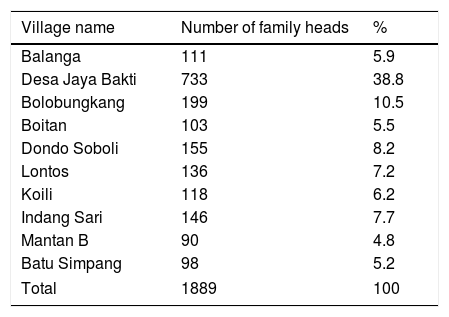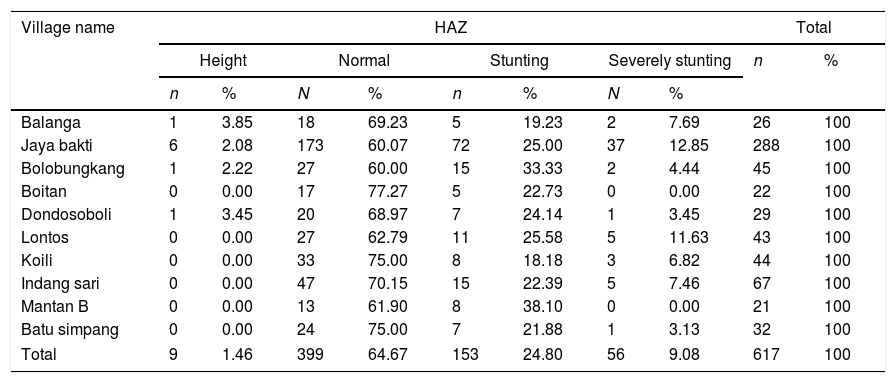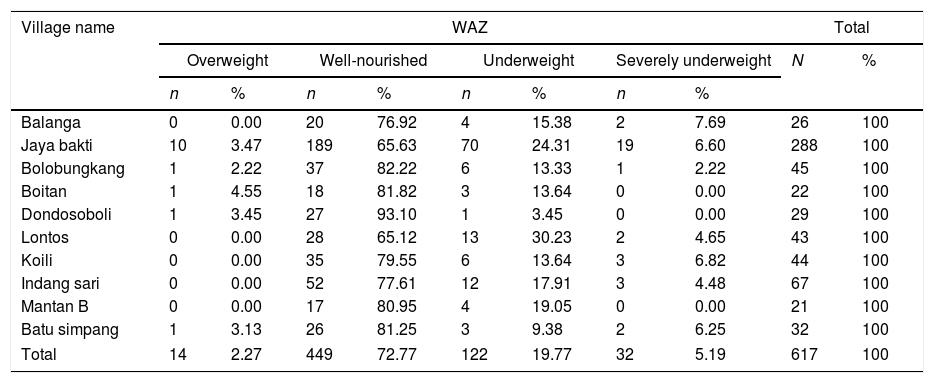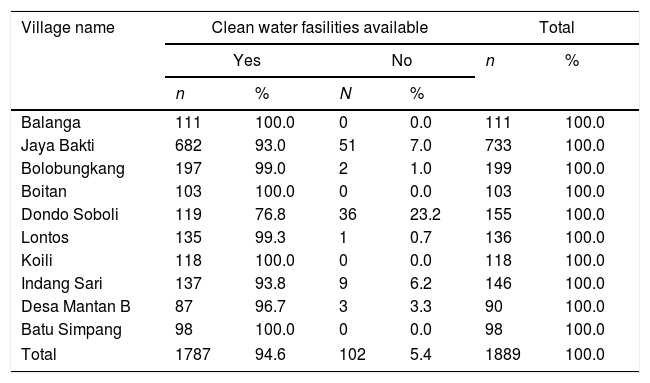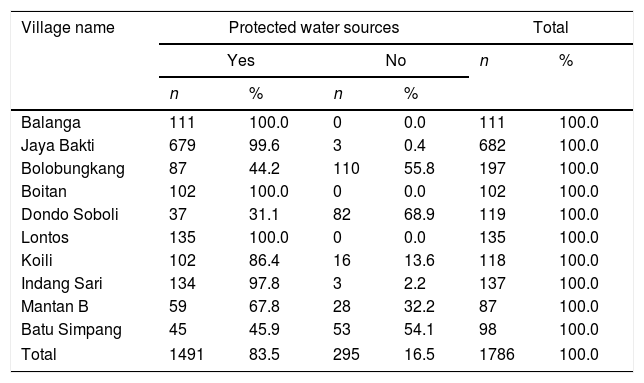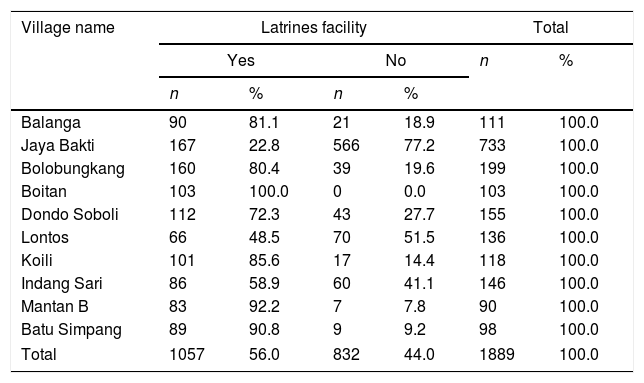The purpose of this study was to describe the nutritional status and environmental problems in Banggai Regency.
MethodsThis study was cross-sectional involved a total sampling of 1889 families and 617 children aged 0–59 months in 10 villages collected in 2018. Data were collected through interviews and anthropometric measurements using the Camry brand digital scales, length board, microtoise and interviews using a structured questionnaire. Data collection results were processed and analyzed using WHO Anthro and SPSS 21.
ResultsThis study shows that households (n=1889) with clean water facility were 94.60%, protected water source was 83.50%, and presence of family latrines was 56.00%. The nutritional status (n=617) by WAZ indices was overweight (2.27%), normal (72.77%), underweight (19.77%), and severely underweight (5.19%). Nutritional status by HAZ indices was normal (66.12%), stunting (24.8%), and severely stunting (9.08%). Nutritional status by WHZ indices was normal (90.76%), wasted (6.16%), and severely wasted (3.08%).
ConclusionsThe major nutritional problems are stunting, while the absence of a latrine facility in the household was found to be the most environment problem in Banggai Regency. It is essential to improve the environment sanitation as this factor may be related to the stunting incidence in Banggai Regency.
Artículo
Comprando el artículo el PDF del mismo podrá ser descargado
Precio 19,34 €
Comprar ahora






